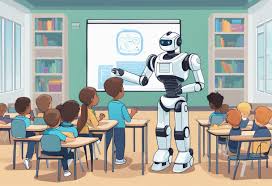In today’s evolving educational landscape, the traditional role of a teacher has expanded beyond textbooks and worksheets. Innovative educators now incorporate kids animated shows into their curriculum, recognizing the powerful engagement these visually stimulating programs can create. This integration represents a significant shift in teaching methodology, acknowledging that children in the digital age respond to multimedia approaches that capture their imagination while delivering educational content.
The strategic use of animated content allows teachers to present complex concepts in accessible formats. When students struggle to grasp abstract ideas through conventional methods, animation provides a visual scaffold that makes learning more tangible. Educational researchers have documented how animated learning tools can increase retention rates by up to 60% compared to text-only instruction, particularly for visual learners who comprise approximately 65% of the student population.
These animated educational resources serve multiple purposes in the classroom environment. Beyond simply entertaining children, quality educational animations incorporate age-appropriate vocabulary, problem-solving scenarios, and social situations that reinforce classroom learning objectives. Teachers report that students often reference characters or scenarios from these shows when working through similar problems in their assignments, demonstrating how animation creates memorable learning anchors.
The accessibility of animated content has dramatically increased in recent years. Streaming platforms have developed specialized educational sections, making it easier for teachers to find content aligned with specific learning standards. Additionally, many animation studios now consult with educational experts during program development to ensure their content supports classroom objectives while maintaining the entertainment value that keeps children engaged.
Professional development for educators increasingly includes training on media literacy and effective integration of digital content. Forward-thinking school districts recognize that teachers need support in evaluating animated content for educational merit and appropriate implementation in lesson plans. This training emphasizes that animated shows should complement rather than replace traditional teaching methods, creating a balanced approach that addresses diverse learning styles.
Parent-teacher partnerships play a crucial role in the successful integration of animated content. When teachers communicate the educational purpose behind assigned viewing, parents can reinforce these learning objectives at home. This collaboration creates a seamless educational experience that extends beyond the classroom, with animated characters and scenarios becoming shared reference points for continued learning conversations.
The most effective classroom implementation occurs when teachers create structured viewing experiences. Rather than passive consumption, guided viewing includes pre-watching activities that establish learning goals, active watching with specific observation tasks, and post-watching discussions or projects that reinforce key concepts. This structured approach transforms entertainment into meaningful educational experiences.
Critics sometimes express concern about screen time in educational settings. However, research indicates that the quality of content and viewing context matters more than strict time limitations. When teachers carefully select animated content with substantial educational value and facilitate active engagement rather than passive viewing, the benefits typically outweigh potential concerns about technology dependency.
Cultural representation within animated educational content has become an important consideration for classroom use. Progressive teachers seek out shows that present diverse characters, backgrounds, and perspectives, helping students see themselves represented in educational materials while also building cultural awareness and empathy toward others with different experiences.
The future of this educational partnership between teachers and animated content looks promising. As technology continues advancing, we’re likely to see more interactive animated experiences specifically designed for classroom use. These innovations may include customizable content that teachers can adapt to their specific classroom needs and individual student learning profiles, further personalizing the educational experience.

